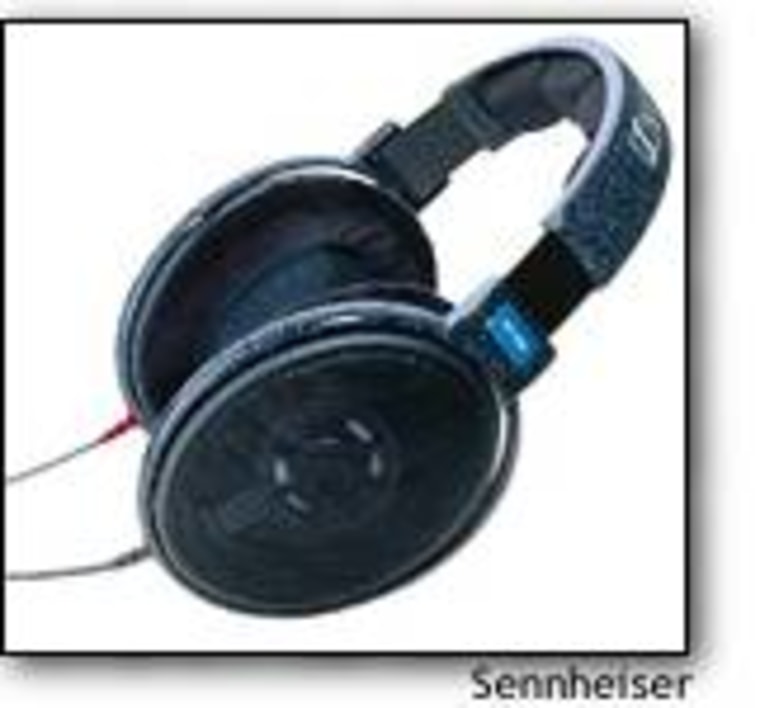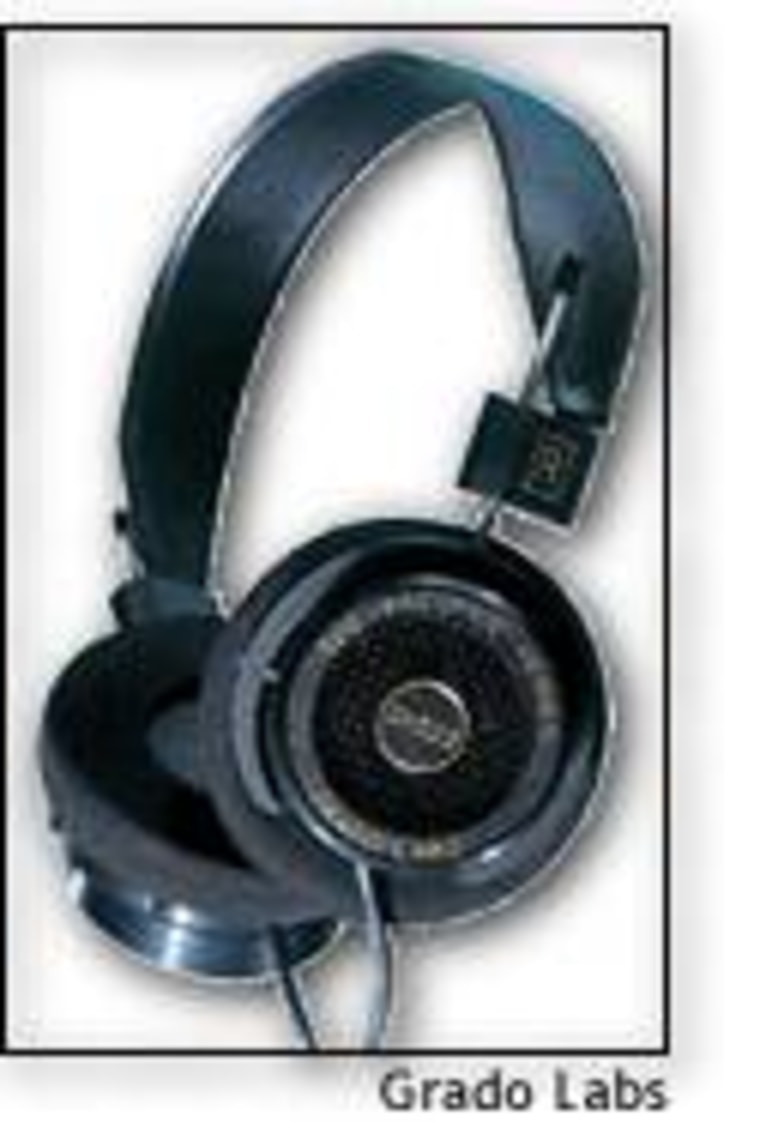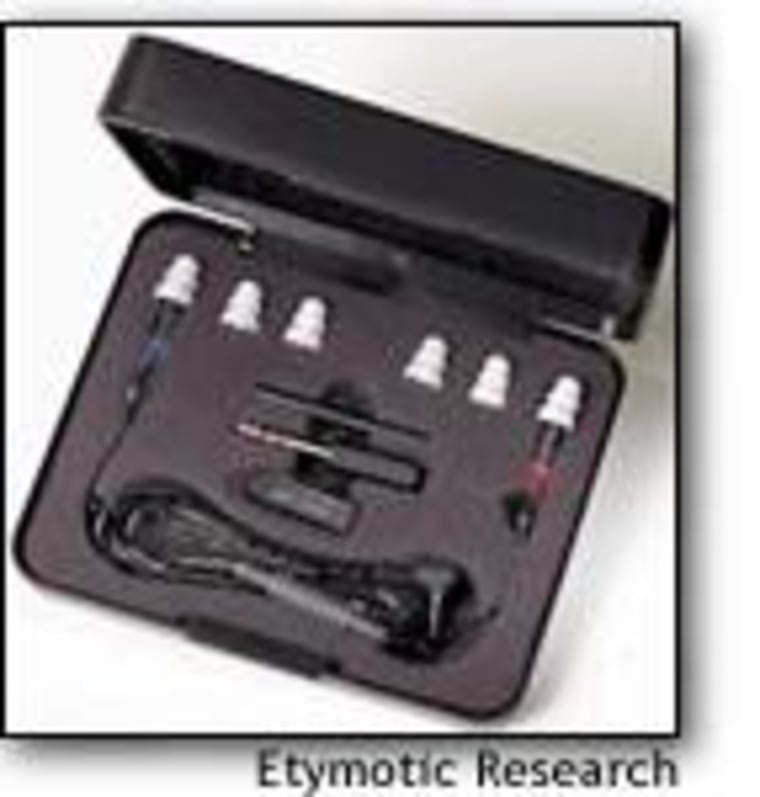Buried somewhere in a box are my prized possessions: the Stax headphones I bought when I was still in college. Too bad I can’t afford a new pair, which these days cost more than $6,000. So, I set forth looking for headphones that are just as good.
InsertArt(1858649)I LOVE MY Grado SR60s. As I wrote in my review of lower-end headphones, they sound a lot better than their $69 price would let on.
So, it’s no stretch that I also like Grado’s SR125 ($150 list) model. They’re a lightweight, over-the-head model which produces a slightly more refined sound than my trusty 60. Like its more expensive cousins, the 125 produces a sound that’s front and center, well-balanced and never fatiguing. They can be used with or without a separate headphone amp.
$200 TO $500 If you’re willing to spend a little more money you are rewarded with very, very incredible sound reproduction. There are quite a few headphones that list for more than $200 — but there are only a handful of them that you should consider.

The first pair is from Sennheiser. The HD 580 ($260) and the HD 600 ($450) are superlative. They’re both over-the-head ‘phones which completely surround the outer ear, but allow some room sounds in as well. Both present you with what I consider a reserved, polite sound — the 580 a little more so than the 600. The 600 produces smooth highs and the most incredible bass you’ve ever heard from a set of headphones. Subjectively, the bass seems to go lower than any speaker system I’ve ever heard in my home.
Some experts think the attached cord holds the 580 and the 600 back, however. Sennheiser says they use really good wire in their cords, but an after-market has blossomed nonetheless. HeadRoom sent me a set of Cardas replacement cables made especially for the 580 and 600 ($150-$250 depending on length). The cables sounded good, but only when the connectors stayed plugged in.
After further investigation I tried Stefan AudioArt cables for the Sennheiser and achieved near nirvana. James Serdechny’s 9-foot long Equinox 580/600 cable ($189 balances the midrange to match the highs and the lows, making for an incredible combination. I highly recommend the 600 with this cable; it’s superb.
The Sennheisers also sound their best with a dedicated amplifier, but I’ve auditioned so many that I’ll save that topic for a separate column.

Our friends at Grado have lots to tempt you, too. Grado’s SR325 ($295) is a super-refined version of the SR125 mentioned above, with a very balanced, up-front sound that is terrific for the price.
You might also prefer the way the Grados sit on your ear rather than over them. Go try them and hear how they sound.
$500 TO $1,000 Refine the SR325 to the max and you get Grado’s top of the line, the RS1 ($695). It is a superb-sounding headset with smooth, balanced, detailed sound. The RS1 is probably the best pair of headphones you can buy that don’t really need a separate amplifier.
Then there are the AKG K1000 headphones. They list for $916 and are in a league of their own.
These are truly ear speakers. The transducers sit next to your ear, not on or in them. You can angle them on their adjustable headband for the best combination of direct and reflected sound. (See the photograph at the top of this page.)
These headphones let you hear EVERYTHING that’s going on around you: A small amount of the sound from the right ear speaker can be heard in the left ear, and vice versa, just like when you’re listening to big speakers in a room. That’s good and bad. Good, because you can actually hear someone talk to you if you’d like. Bad, because everyone in the room can hear what you’re listening to. Overall, music through the K1000 is simply startling. It just sounds real.
Forget using a headphone amp with the K1000, it needs a real, 2-channel, stereo-power amplifier. These headphones don’t plug into a regular headphone jack. They’re also very inefficient, consuming watts of power, as opposed to a few mill watts for all others. I’ll tell you which amps to consider in part three of this epic. They also sound best when you have Serdechny of Stefan AudioArt make you a special 5-foot audio cable ($179-$209 depending on the amplifier connections), bringing the highs, mids and lows into perfect perspective.
The AKG K1000 headphones are expensive and unusual, but they sound unbelievable and are worth every penny.
SHUTTING OUT THE NOISEMany readers have asked me about noise-cancelers, headphones that attempt to block room noise as well as play back music. Here’s my answer: Don’t waste your time with devices that add electronic gimmicks to mask noises. Go buy the real thing.
I told you about the inexpensive Shure and Etymotic earplug-style devices in the last column. Today, their “older” siblings:

The Etymotic Research ER-4 comes in three configurations: the 4S, which is probably the best sounding sealed headphone on the planet; the 4P, for use with portable devices; and the 4B for binaural recordings (recorded especially for headphones). They list for $330 each.
The Shure E5c lists for $500 and has separate treble and bass drivers in each tiny earplug. The Etymotics have just one.
For sound reproduction I prefer the Etymotic design in this price range. Place them properly in your ears and all other sounds disappear. With 20-25db of external noise exclusion they work better than any of the noise-canceling headphones I’ve auditioned.
For all those readers who’ve asked me about wireless headphones — I’m still waiting to hear a pair that sounds really great. Most sound merely good. Listen for yourself.
PUMP DOWN THE VOLUME Finally, a warning about any and every headphone you might buy. Turn down the volume! Headphones are made to bring music to your ears, not to blow your ears apart. Modern electronics make it very easy to to permanently damage your hearing.
Now, I love rocking out with headphones going full blast, but I find it’s more enjoyable to listen at real music levels instead. I don’t think Norah Jones was meant to be heard at Led Zeppelin levels. Turn the volume down to what you think sounds normal, then turn it down another half-notch. You’ll be able to enjoy listening to your favorite music for a long time.
Go to Part 3 of this series: A round-up of headphone amplifiers.